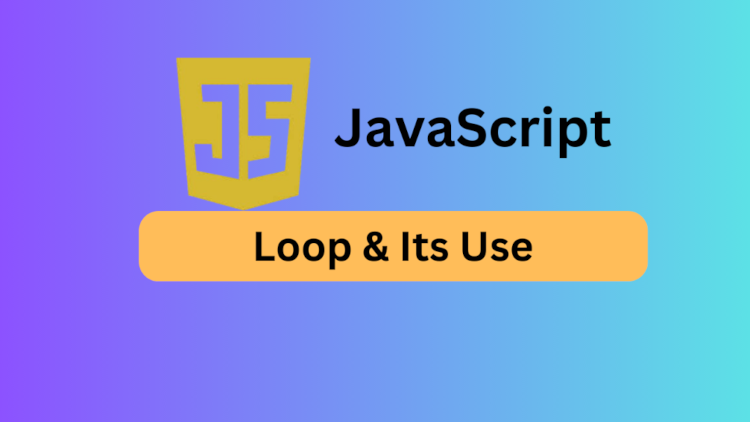
In JavaScript, When we need to execute a same block of code multiple times without redundancy, we use Loop. It is very important part of any programming language. JavaScript support several types of loop that perform repetitive tasks. In this article, we will learn about JavaScript Loop in depth with the help of examples.
Programming requires loops, which enable programmers to run a section of code again without creating duplicates. Several kinds of loops are available in JavaScript to carry out repetitive operations, maximize code efficiency, and enable iteration across data structures.
Types of Loops
There are several loop structures supported by JavaScript, and each is appropriate for a certain situation. The main kinds of loops are as follows:
- for Loop
- while Loop
- do…while Loop
- for…in Loop
- for…of Loop
1. The for Loop
One of the most often used loops in JavaScript is the for loop. When the quantity of iterations is known in advance, it is especially helpful.
Syntax
for (initialization; condition; iteration)
{
// Code block to be executed
}
Example
for (let i = 0; i < 5; i++)
{
console.log("Iteration number: " + i);
}
2. The while Loop
The while loop used, when the number of iterations is uncertain and contingent on the fulfillment of a particular condition.
Syntax
while (condition)
{
// Code block to execute
}
Example
let count = 0;
while (count < 5)
{
console.log("Count is: " + count);
count++;
}
3. The do…while Loop
The while loop and the do…while loop are comparable, but the do…while loop makes sure the loop body executes at least once before testing the condition.
Syntax
do
{
// Code to execute
} while (condition);
Example
let num = 0;
do
{
console.log("Number: " + num);
num++;
} while (num < 5);
4. The for…in Loop
The properties of an object can be iterated over using the for…in loop.
Syntax
for (let key in object)
{
// Code to execute
}
Example
let person = {name: "John", age: 30, city: "New York"};
for (let key in person)
{
console.log(key + ": " + person[key]);
}
Also read about JavaScript Conditional Statements
5. The for…of Loop
Arrays, strings, and sets are examples of iterable objects that can be iterated over using the for…of loop.
Syntax
for (let element of iterable)
{
// Code to execute
}
Example
let numbers = [1, 2, 3, 4, 5];
for (let num of numbers)
{
console.log(num);
}
Loop Control Statements
Sometime, we need to stop loop or skip loop on some condition, we use Loop control statements. Loop control statements are provided by JavaScript to alter the loop's flow. Mostly, We use two Loop control statements:
- break Statement: It will terminate the loop immediately.
- continue Statement: It will skips the current iteration and moves to the next one.
Example of break
for (let i = 0; i < 10; i++)
{
if (i === 5)
{
break;
}
console.log('Value of i is: ' + i);
}
Output
Value of i is: 0
Value of i is: 1
Value of i is: 2
Value of i is: 3
Value of i is: 4
Example of continue
for (let i = 0; i < 10; i++)
{
if (i === 5)
{
continue;
}
console.log('Value of i is: ' + i);
}
Output
Value of i is: 0
Value of i is: 1
Value of i is: 2
Value of i is: 3
Value of i is: 4
Value of i is: 6
Value of i is: 7
Value of i is: 8
Value of i is: 9
Best Practices for Using Loops
- Make certain that the loop conditions will ultimately evaluate to false.
- Always choose between for loop, while loop, & for...of loop according to situation.
- Try to use minimal operations inside loop.
- For more effective iterations, we should use .forEach(), .map(), .filter & .reduce() options.
Conclusion
A key idea in JavaScript that helps programmers create clear, effective code is loops. Code readability and performance can be greatly improved by knowing when and how to use various loop types. Developers can easily create reliable applications by utilizing suitable loop structures and adhering to recommended practices.











